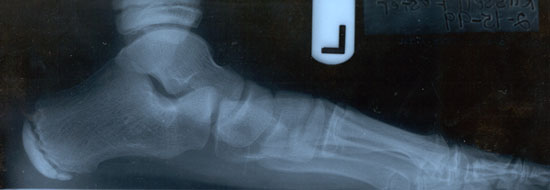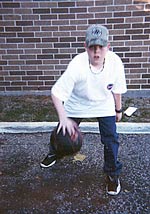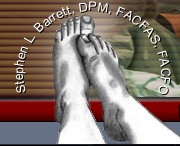|
Untreated
Flatfoot

Flatfoot Corrected

As seen in the photos above of the
x-rays, you can see the serious collapse in the foot before
treatment. In the photo on the bottom, we see an x-ray with
correction. Even though many doctors will still say that flatfeet do
not need to be treated, we know that this is not the case and the
current biomechanical literature now strongly supports treatment of
severe cases. In fact, this condition accounts for significant
skeletal problems later in life including: low back pain, knee joint
degeneration, increased risk of knee injuries, lower extremity pain,
and ankle problems.
Is surgery necessary? No. In
milder cases successful treatment can be obtained with prescription
insoles, which are called orthotics.
I've heard that flatfoot surgery
in children is very complex, and has a lengthy recovery period?
In the past, this was true. But with the advancements in techniques,
and new surgical procedures, there is a relatively mild
post-operative course. We use a minimally invasive approach, which
takes less than one hour to perform, and is outpatient. The child
rarely has pain that needs medication for more than two days
afterward, and some require no medication at all. The child has to
be kept non-weight bearing for about 1 month, and then is allowed to
bear partial weight. Complete recovery is expected at 8-12 weeks
|
 |
Russell Foster was 12 years old when he
had his surgery to correct his flatfeet. He is now able
to do normal activity without pain. When asked his
thoughts about the surgery, Russell said the worst part was
getting the IV before surgery. |
|



